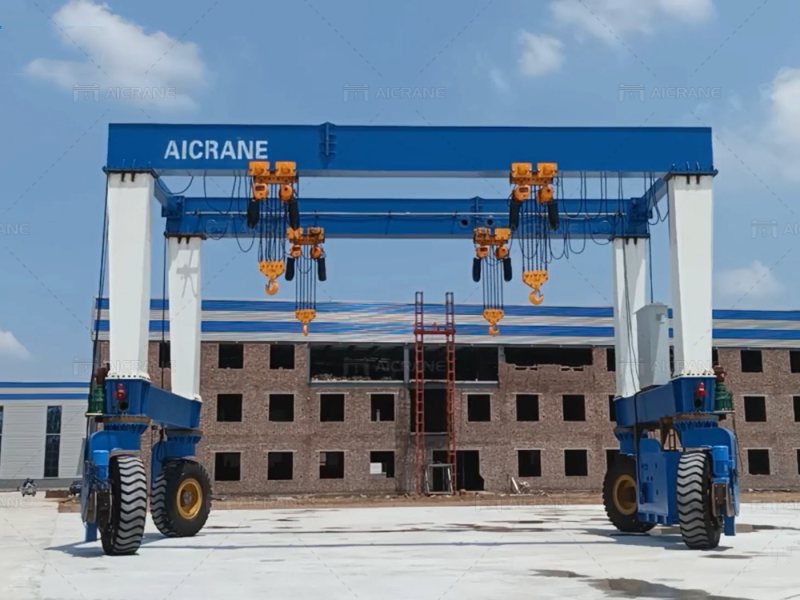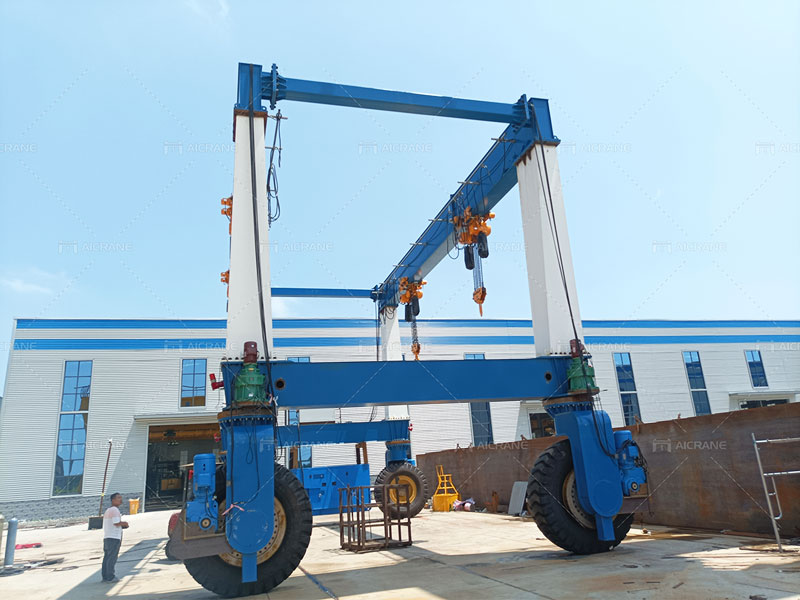Rubber tyred gantry cranes (RTGs) play a pivotal role in material handling and container management at ports and shipping terminals. When it comes to investing in such critical equipment, it is imperative for businesses to carefully evaluate various aspects to ensure optimal performance, efficiency, and longevity. This article aims to highlight key considerations that should be taken into account when assessing rubber tyred gantry cranes for sale, with a focus on the crucial factors of gantry crane design and lifting capacity.
Gantry Crane Design
The design of a rubber tyred gantry crane is a fundamental factor influencing its functionality and suitability for specific applications. The two primary designs in the market are the conventional box girder design and the truss girder design. The box girder design provides enhanced structural stability and rigidity, making it suitable for heavy-duty lifting operations. On the other hand, the truss girder design offers a lighter structure, making it more adaptable for applications where mobility and flexibility are paramount.
When evaluating RTGs for sale, businesses should carefully assess their operational requirements and select a gantry crane design(Козловые краны купить) that aligns with the specific needs of their material handling processes. Considerations should include the frequency of lifts, the type of cargo being handled, and the available space at the facility.

Lifting Capacity
The lifting capacity of a rubber tyred gantry crane is a critical specification that directly impacts its efficiency and performance. The lifting capacity is often categorized into two key components: the main hoist capacity and the auxiliary hoist capacity. The main hoist is responsible for the primary lifting tasks, while the auxiliary hoist handles additional functions such as precise positioning and tandem lifts.
It is essential for buyers to accurately assess their cargo requirements and select an RTG with an appropriate lifting capacity. Overestimating or underestimating lifting capacity can result in operational inefficiencies, increased maintenance costs, and potential safety hazards. Additionally, businesses should consider future growth and expansion plans to ensure that the chosen rubber tyred gantry crane can accommodate evolving operational demands.
Mobility and Maneuverability
RTGs are renowned for their mobility and maneuverability, allowing them to efficiently navigate container yards and handle containers with precision. When evaluating cranes for sale, businesses should assess the crane’s wheel configuration, steering systems, and overall mobility features. Four-wheel steering systems provide enhanced maneuverability, enabling the crane to move laterally and negotiate tight spaces with ease.
Moreover, the ability of the rubber tyred gantry crane(Козловой кран на пневмоходу) to travel at varying speeds contributes to overall operational efficiency. Variable speed control allows for smooth acceleration and deceleration, reducing wear and tear on the crane components and enhancing overall safety.
Automation and Technology Integration
In the ever-evolving landscape of industrial machinery, the integration of automation and advanced technologies has become a key consideration. When evaluating rubber tyred gantry cranes for sale, businesses should assess the level of automation offered by the crane manufacturer(Aicrane). Advanced features such as automated stacking, container positioning systems, and remote operation capabilities can significantly enhance operational efficiency, reduce labor costs, and improve overall safety.
Automation also plays a crucial role in optimizing container handling processes, minimizing the risk of human error, and ensuring consistent performance. Additionally, compatibility with modern warehouse management systems and data connectivity features should be considered to facilitate real-time monitoring, data analysis, and decision-making.

Maintenance and Lifecycle Costs
Beyond the initial investment, businesses must consider the long-term costs associated with maintenance and the overall lifecycle of the rubber tyred gantry crane. Manufacturers that provide comprehensive maintenance support, spare parts availability, and easy access to technical documentation contribute to the smooth and cost-effective operation of the equipment.
Assessing the durability of components, the ease of maintenance procedures, and the availability of service agreements can help in estimating the total cost of ownership. A well-maintained crane(Козловой кран на колесах) not only prolongs its operational life but also minimizes downtime, ensuring a consistent workflow in the material handling process.
Investing in a rubber tyred gantry crane is a significant decision for businesses involved in material handling and container management. By carefully considering the gantry crane design, lifting capacity, and mobility features, companies can make informed decisions that align with their specific operational requirements. A well-chosen RTG not only improves efficiency and productivity but also ensures a long-lasting and reliable solution for the dynamic demands of modern cargo handling facilities.